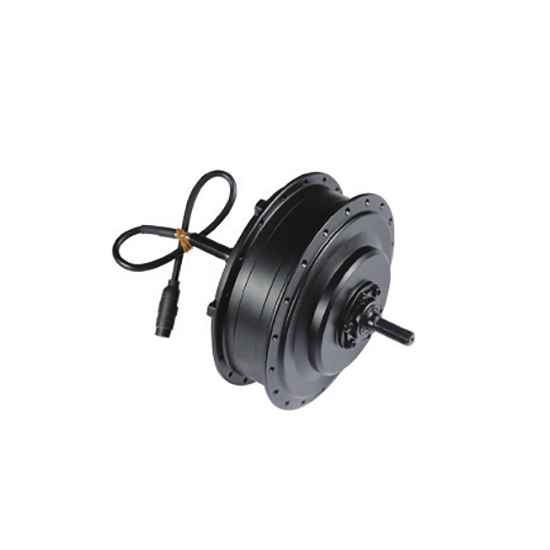5 Functions of Electric Hub Motor in Daily Life
Mon, May 30 by ATO.com
A hub motor is a electrical motor coupled to the wheels of a vehicle. It is commonly used in electric bicycle. The most commonly used hub motor is Brushless DC motor owing to its high torque to weight ratio. The hub motor is usually coupled to the wheels with speed controllers in order to vary the speed of movement of the bicycle.
Today, we will talk about the five functions of electric hub motor.

Functions of hub motor
- Bearing and driving
Carrying and driving is a must-have for in-wheel motors. The way of load bearing is to rely on the axle bearing to realize the centering of the rotation and the stator. The wheel rim of the vehicle is connected to the suspension axle housing through the axle bearing instead of the stator and rotor to carry the road shock absorber and load. The way of driving is that the outer rotor is directly connected with the wheel rim to achieve the purpose of direct driving. - Electronic differential control
Electronic differential control is also one of the functions of the in-wheel motors. The realization method is the front wheel steering, which is completed by the ordinary steering machine; the rear wheel needs slip, which is completed by the electronic differential; the turning radius is determined by the angle of the front wheel steering machine, and the rear wheel slip is determined by the turning radius of the vehicle and the wheelbase. The rear wheel slip is calculated from the rotation angle of the front wheel steering gear. The steering gear can also be electronically steered. Even if the rear wheel cannot be strictly differential, the inner wheel should change from "active" to "slave" by disconnecting the motor or connecting a compensation resistor in series in the loop. - Braking energy recovery
In-wheel motors also function as braking energy recovery. During the braking process of an electric vehicle, the kinetic energy of the whole vehicle is transmitted to the motor through the wheels, thereby driving the motor to rotate. At this time, the motor works in the power generation state, charges the energy storage device, that is, the battery or the super capacitor, converts the braking energy into electrical energy and stores it in the energy storage device, and realizes the regeneration and utilization of energy. At the same time, the resistance torque generated by the motor acts on the wheels to generate braking torque, which plays the role of deceleration and braking. - Cooling of the motor
There are two cooling methods for in-wheel hub motors, air cooling and water cooling. For air cooling, a structure that is conducive to the circulation of air is used to cool the in-wheel motor, such as a built-in cooling fan; for water-cooling, a special cooling liquid channel is set to cool the in-wheel motor through heat exchange with the liquid. - Brake system integration
In-wheel hub motor functions also include brake system integration. The braking system includes electric braking and friction braking, and the friction braking integration is generally a disc brake. The rotating element in the friction pair of the disc brake is a metal disc that works on the end face, which is called the brake disc. Friction elements clamp the brake disc from both sides to generate braking.
ATO offers two types of hub motor: gear hub motor and gearless hub motor. Compared with the centralized power drive of the electric motor, the in-wheel motor technology has great advantages. It has a more flexible layout and does not require a complex mechanical transmission system.

